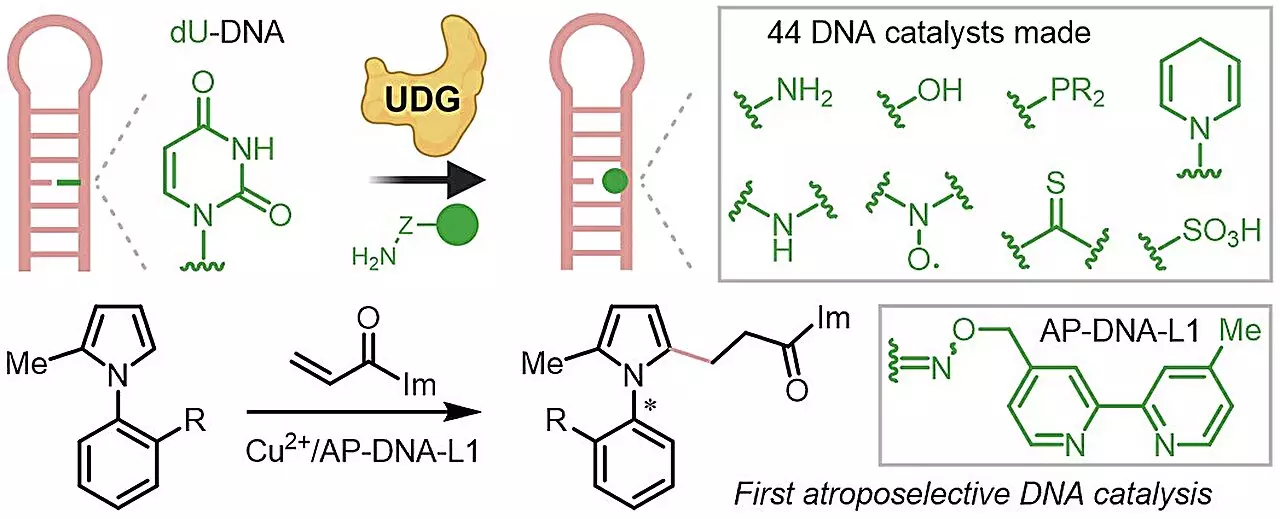As the field of chemistry advances, the demand for sustainable and efficient catalytic methods grows. Conventional enzyme-based catalysis has proven effective in synthesizing chiral molecules, yet it faces significant limitations. Enzymes, while powerful biological catalysts, often suffer from instability and complexity in design. This can hinder their broader application in asymmetric reactions, which are crucial for developing pharmaceuticals and fine chemicals. As a result, chemists are seeking alternatives that can match the performance of enzymes while being easier to manipulate and more robust.
In response to these challenges, researchers have turned towards deoxyribonucleic acid (DNA) as a promising alternative. Unlike proteins, DNA is inherently more stable, providing a reliable scaffold for catalysis. The unique base-pairing properties of DNA enable a programmable structure, allowing scientists to tailor the catalysts precisely for the reactions they wish to facilitate. This programmability not only enhances the efficiency of synthesizing chiral molecules but also significantly reduces costs associated with catalyst development.
Recently, a team led by Assistant Professor Zhu Ru-Yi at the National University of Singapore has unveiled an innovative method harnessing DNA repair mechanisms in conjunction with biorthogonal chemistry. Their research addresses a fundamental challenge in DNA catalysis: the complexity of catalyst production. By simplifying this process, they have made it feasible for individuals without advanced training or sophisticated laboratory equipment to utilize DNA as a catalyst, broadening its accessibility and potential applications in organic synthesis.
The National University of Singapore team’s research has resulted in the creation of 44 unique DNA catalysts, showcasing significant improvements in enantioselectivity and overall reaction efficacy compared to their predecessors. The incorporation of biorthogonal reactions means that these catalysts operate without disrupting existing functional groups, thus maintaining the integrity of complex molecules during synthesis. This versatility is critical for real-world applications where many different functionalities are present.
Furthermore, the team’s demonstration of the first atroposelective DNA catalysis marks a significant milestone in the field. Atropisomers, notorious for their complexity in synthesis, can now be generated more efficiently using these advanced DNA catalysts. This achievement not only enriches the toolbox available to chemists but also opens avenues for synthesizing compounds that have previously posed substantial challenges to traditional catalytic methods.
The future of DNA catalysis appears promising, with ongoing efforts to refine strategies and broaden the scope of sustainable chemical reactions. The implications of this research extend far beyond academia; they hold the potential for transforming industrial applications, particularly in pharmaceuticals, where efficiency and sustainability are paramount. As the ability to fabricate diverse and sophisticated DNA catalysts improves, we may soon witness a paradigm shift in how asymmetric catalysis is approached, with DNA playing a central role in the synthesis of complex, chiral molecules efficiently and sustainably.


Leave a Reply